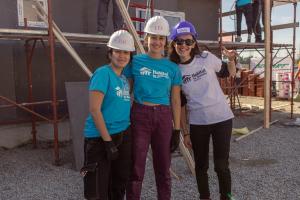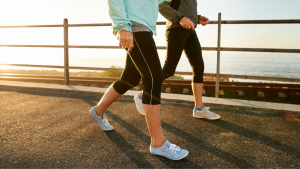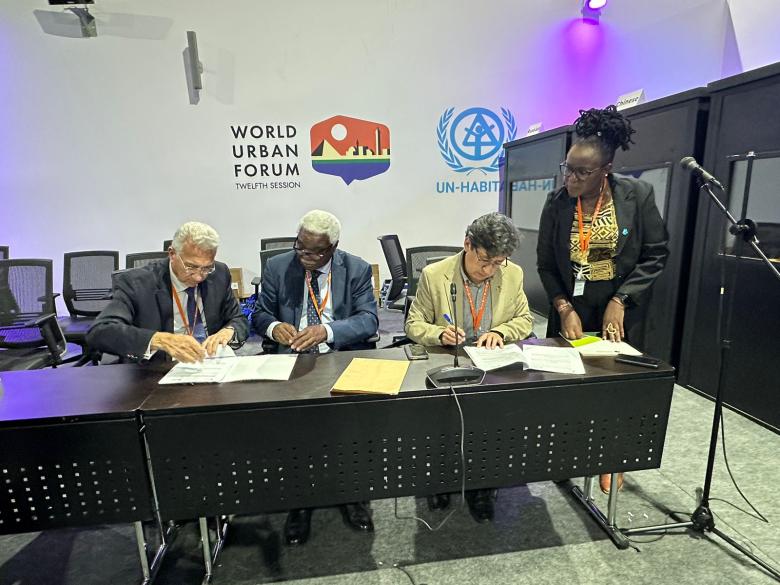Building Dreams Together: Alaa and Lea’s Hope Build Experience in Romania
As International Volunteer Day approaches, stories like those of Alaa Al-Haddad and Lea Strpkova, employees of Habitat for Humanity International Europe and Middle East, shine a light on the transformative power of giving back. Two months ago, Alaa, donor engagement coordinator, and Lea, resource development assistant, joined 150 other volunteers for the Hope Build event in Berceni, Romania. Their journey was one of sweat, teamwork, and lasting impact.
As International Volunteer Day approaches, stories like those of Alaa Al-Haddad and Lea Strpkova, employees of Habitat for Humanity International Europe and Middle East, shine a light on the transformative power of giving back. Two months ago, Alaa, donor engagement coordinator, and Lea, resource development assistant, joined 150 other volunteers for the Hope Build event in Berceni, Romania. Their journey was one of sweat, teamwork, and lasting impact.
What is Hope Build?
Hope Build is no ordinary construction project. Organized by Habitat for Humanity Romania, it’s an accelerated building initiative where volunteers from around the world gather to construct homes for and with families in need. The build event joined by Alaa and Lea focused on building two duplex houses in Berceni, county of Prahova, Romania, that would house four families, offering them not just a roof but the foundation for a brighter future. Volunteers installed walls, raised roofs, and worked tirelessly to transform bare foundations into warm, welcoming homes.
For Alaa and Lea, this event wasn’t just about construction—it was about hope.
The Call to Volunteer
For both Alaa and Lea, volunteering is deeply personal. “Volunteering is about giving without expecting anything in return. It’s about making a tangible difference,” shared Alaa. Lea agreed, adding, “Time is one of the most precious things we have. Giving it to someone else is a powerful gesture. Building homes as a team was an experience I could never achieve on my own.”
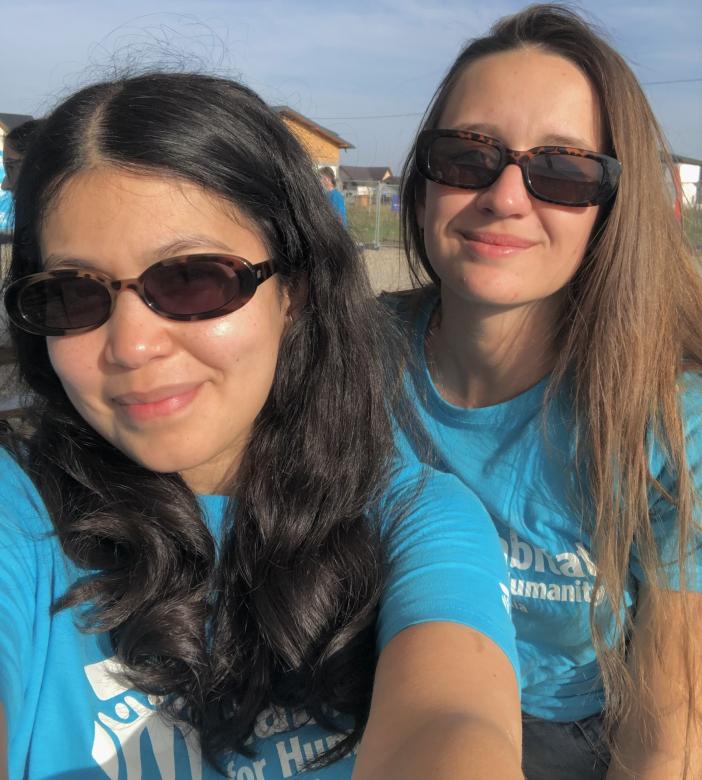
Although both had volunteered before in various capacities—Alaa had helped sort clothes for refugees, and Lea had organized events—Hope Build was the first for them in construction. “It’s not every day you get to build a home!” said Lea with a smile.
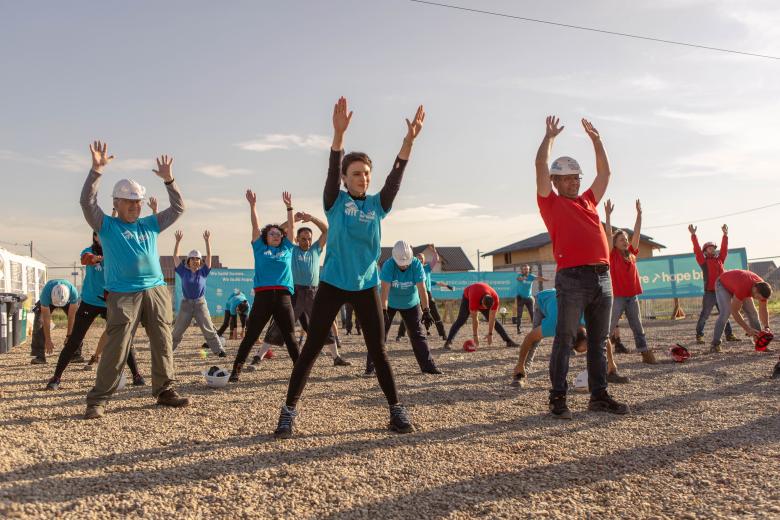
Building from the Ground Up
In Berceni, the days began early, with the team tackling activities like assembling walls, cutting wood, and installing roof tiles. “Each day brought something new,” said Alaa. “From drilling into concrete to applying stucco, we learned so much.” Despite the physical toll, Lea found joy in the variety. “Even when you were learning something tricky, you quickly moved on to another task, so it never felt repetitive.”
One of the most memorable moments came after the first day. “We were physically exhausted, red like tomatoes,” laughed Alaa. “But seeing the frames of the houses standing tall after just one day—it was breathtaking.”
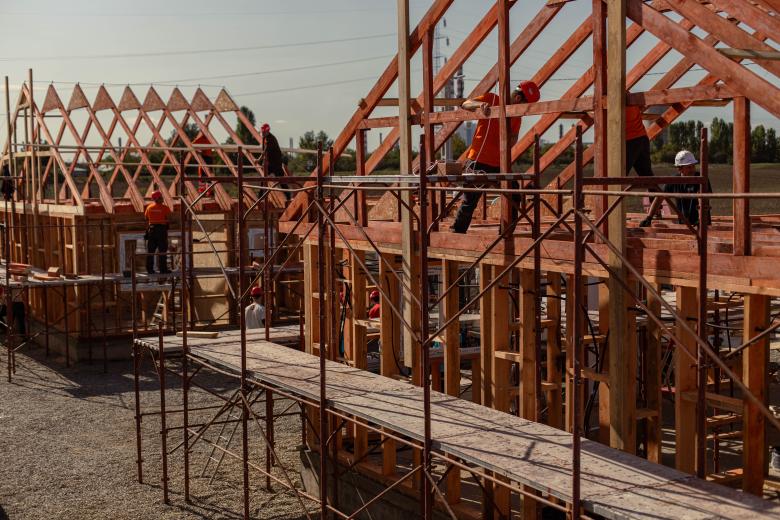
By the end of the week, the houses truly felt like homes. “Each day, you could see the transformation. By the last day, it was hard to believe we’d come so far,” said Lea.
More than Just a Build
The emotional connection was just as significant as the physical labor. Volunteers worked alongside the families who would live in these homes. “Meeting the families was incredibly moving,” said Alaa. “You realize you’re not just building walls; you’re helping to fulfill someone’s dream of a safe, decent home.”
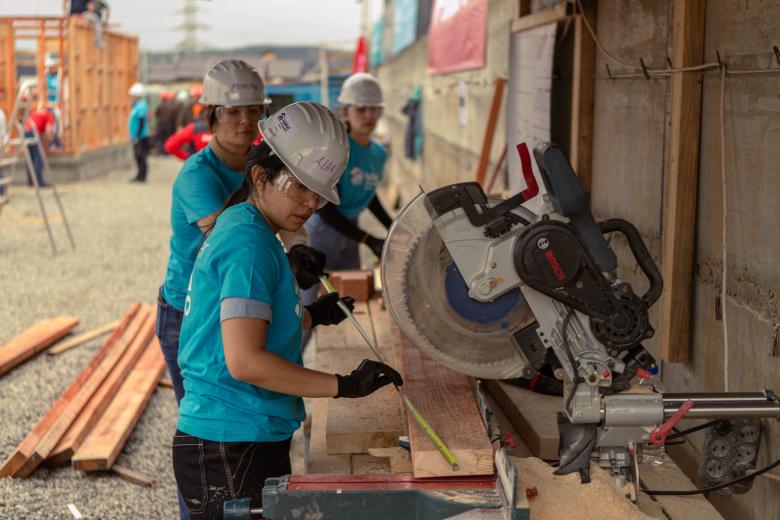
Lea cherished the sense of community. “We were a global team—people from Australia, the U.S., Denmark, Italy and beyond—coming together for a shared purpose. It was a beautiful feeling to be part of something so much bigger than ourselves.”
A Bittersweet Goodbye
When the final day arrived, saying goodbye wasn’t easy. “We’d built such strong bonds,” said Alaa. “It felt like a school—breakfast together, bus rides, working side by side, and dinner as a group. By the end, we knew everyone, and it was tough to leave.”
Lea echoed the sentiment. “Even though I was ready to rest, I felt sad knowing this exact group wouldn’t gather again.”
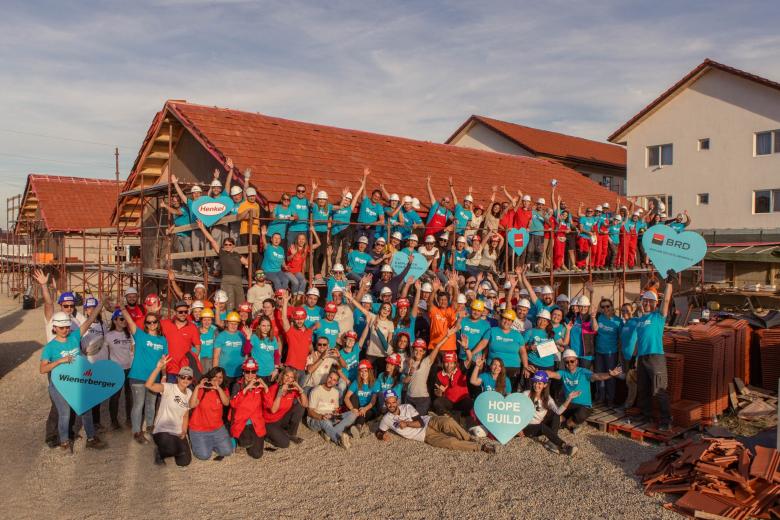
A Lasting Impact
The experience profoundly affected both Alaa and Lea. “I feel so empowered,” shared Alaa. “I joke with friends now that I can help with drilling or building—it’s a skill I never thought I’d have!” For Lea, it was about perspective. “Working with over 150 people showed me the power of collective effort. Together, we created something life-changing.”
They also enjoyed having a new dimension to their daily jobs. “As part of the fundraising team, it was amazing to see the real human stories behind the numbers we work with every day,” said Alaa. “The funds we raise directly support families like those we met in Berceni.”
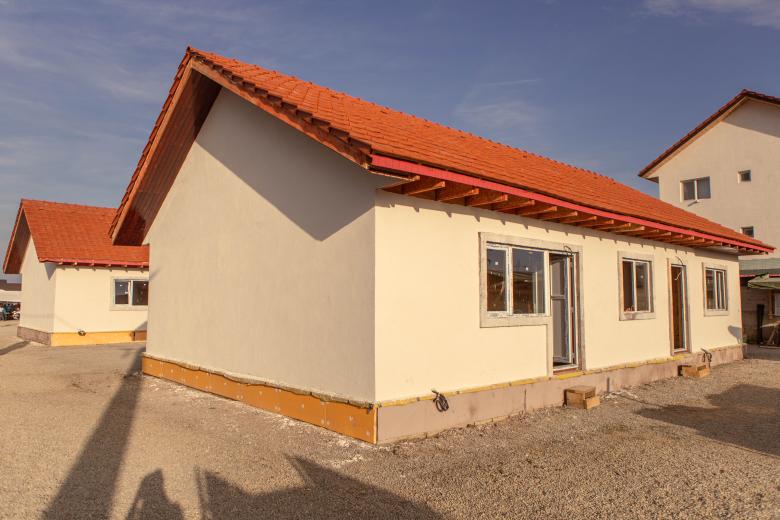
Why Volunteer with Habitat?
For anyone considering volunteering, Alaa and Lea’s advice is simple: do it. “You can’t fully understand the experience until you live it,” said Lea. “It’s more than words can describe.”
“Volunteering with Habitat is about building more than houses,” added Alaa. “You’re building hope, community, and dreams. It’s an experience that stays with you for a lifetime.”
Whether you’re hammering nails or raising funds, every effort helps create a world where everyone has a decent place to live. As Alaa and Lea can attest, the rewards are immeasurable.
For more information about volunteering with Habitat for Humanity, please reach out to us at [email protected].
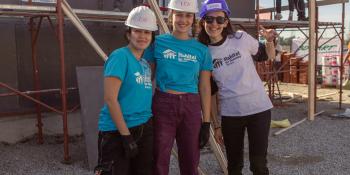
Building Dreams Together: Alaa and Lea’s Hope Build Experience in Romania
DECEMBER 1, 2024
